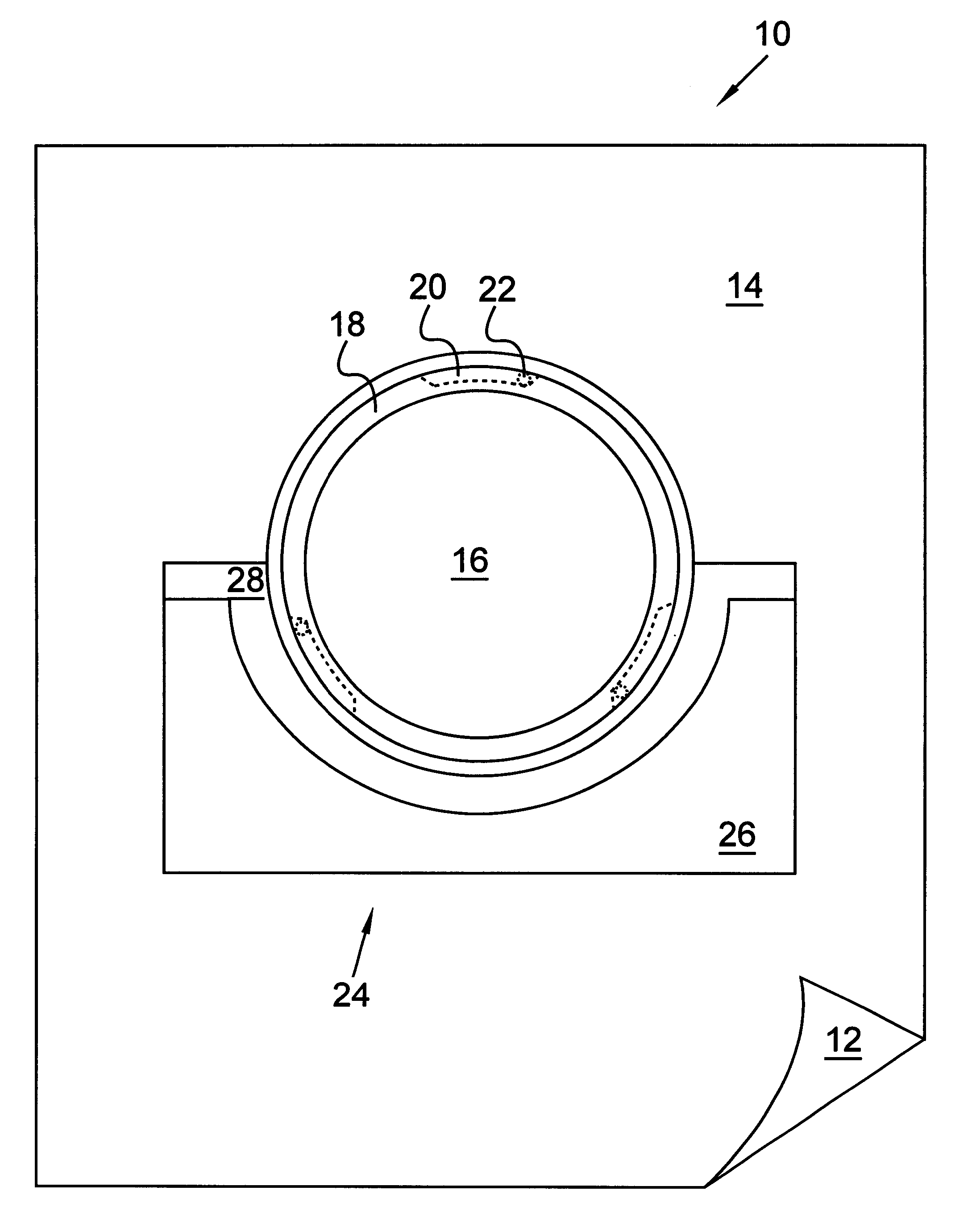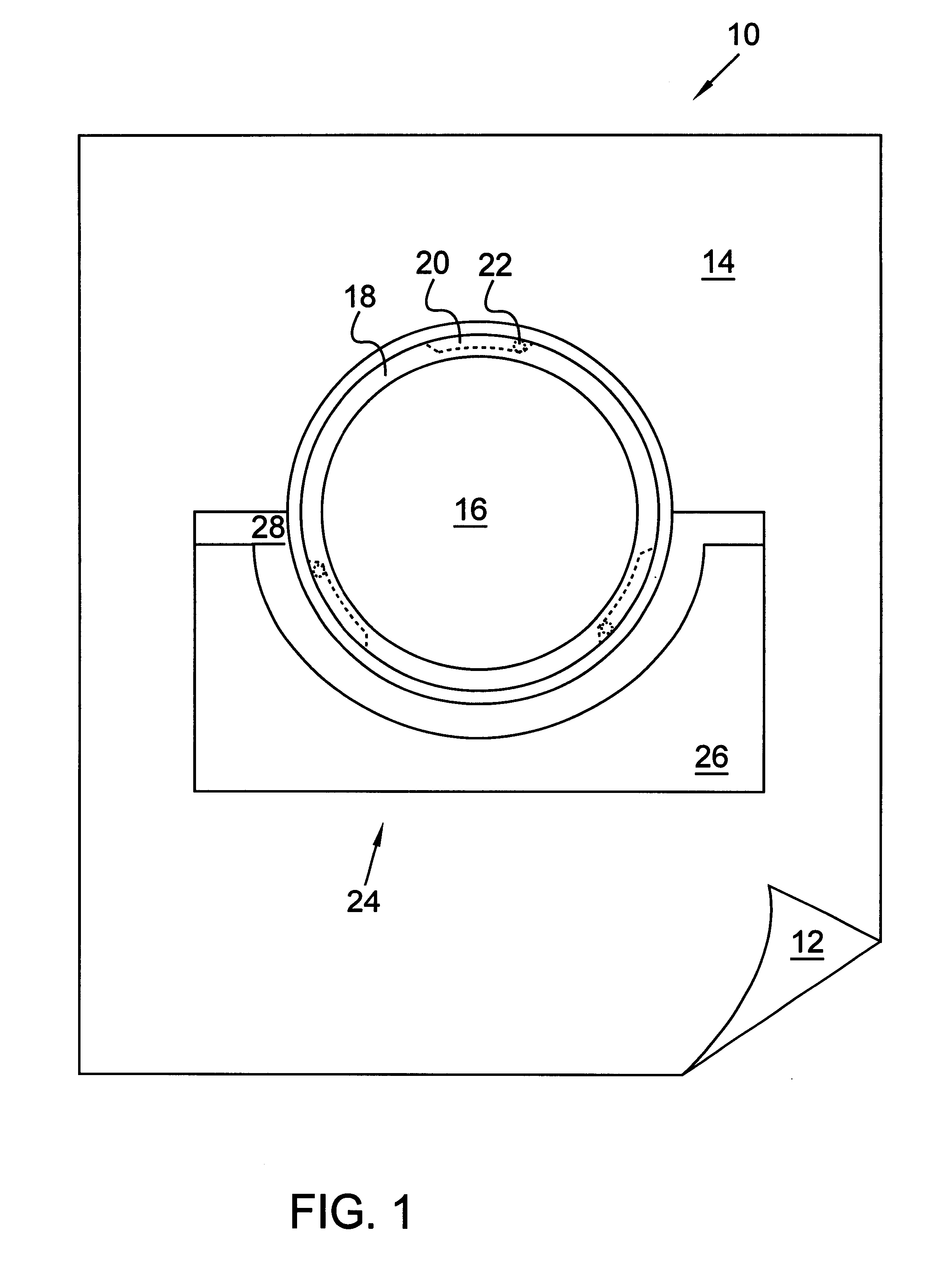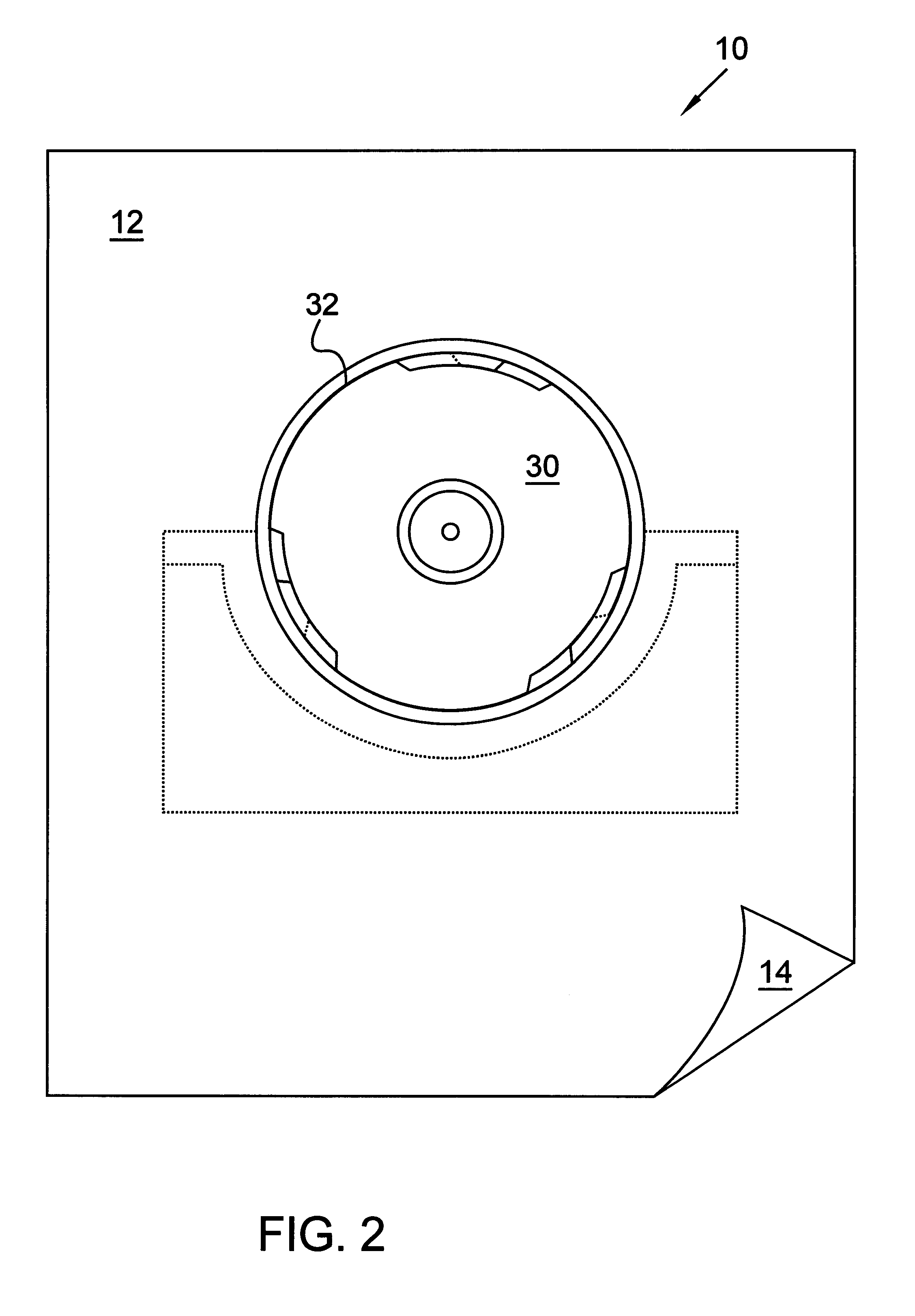Surgical drape for colonoscopy
a surgical drape and colonoscopy technology, applied in the field of protective barriers, can solve the problems of contaminating the air of the examining room, presenting a serious health risk to medical personnel, and contaminating the health of the patient, so as to facilitate the attachment of the scope to the patient, increase the visibility of the doctor and the maneuverability of the scope
- Summary
- Abstract
- Description
- Claims
- Application Information
AI Technical Summary
Benefits of technology
Problems solved by technology
Method used
Image
Examples
Embodiment Construction
Referring now to FIG. 1, surgical drape 10 has non-adhesive side 12 and adhesive side 14. Drape 10 forms a substantially fluid-impermeable barrier between medical personnel and patient during a medical procedure. Adhesive side 14 is adhesive across substantially its entire face. Drape 10 is provided with opening 16 and ledge 18, opening 16 capable of receiving a removable valve and having flanges 20 which form part of the mechanism that locks the removable valve in place. Each flange 20 includes a flange finger 22. Flanges 20 and flange fingers 22 are drawn with dashed lines to indicate that in this view they are behind ledge 18 and would not be visible when looking at adhesive side 14 of drape 10. The locking mechanism will be further illustrated in connection with FIG. 4. Opening 16 is preferably located near the center of drape 10, but can be placed at other locations.
Ledge 18 provides a seat for a gasket attached to the removable valve. When the valve is inserted in opening 16, ...
PUM
 Login to View More
Login to View More Abstract
Description
Claims
Application Information
 Login to View More
Login to View More - R&D
- Intellectual Property
- Life Sciences
- Materials
- Tech Scout
- Unparalleled Data Quality
- Higher Quality Content
- 60% Fewer Hallucinations
Browse by: Latest US Patents, China's latest patents, Technical Efficacy Thesaurus, Application Domain, Technology Topic, Popular Technical Reports.
© 2025 PatSnap. All rights reserved.Legal|Privacy policy|Modern Slavery Act Transparency Statement|Sitemap|About US| Contact US: help@patsnap.com



